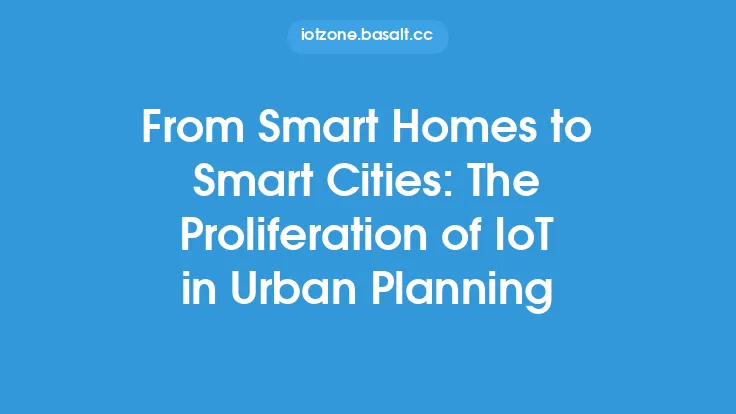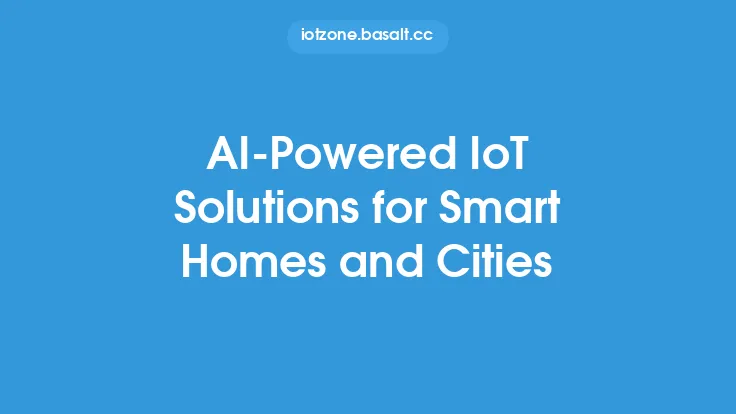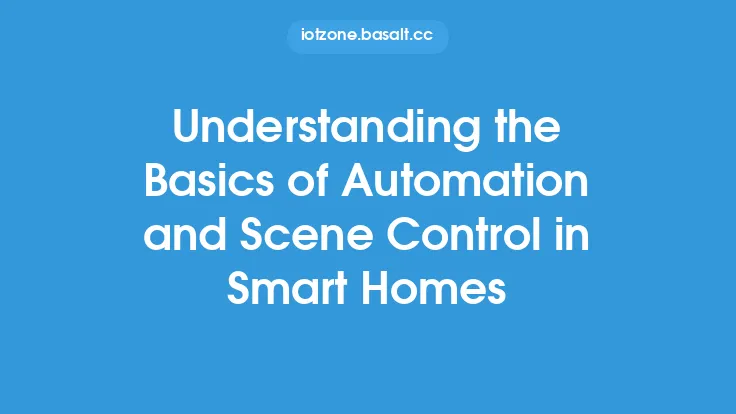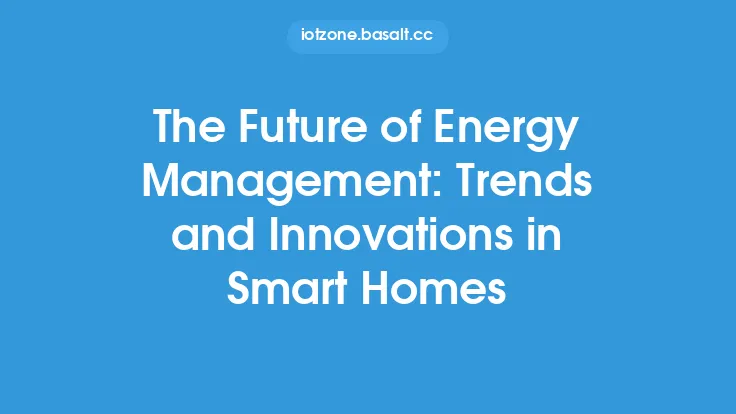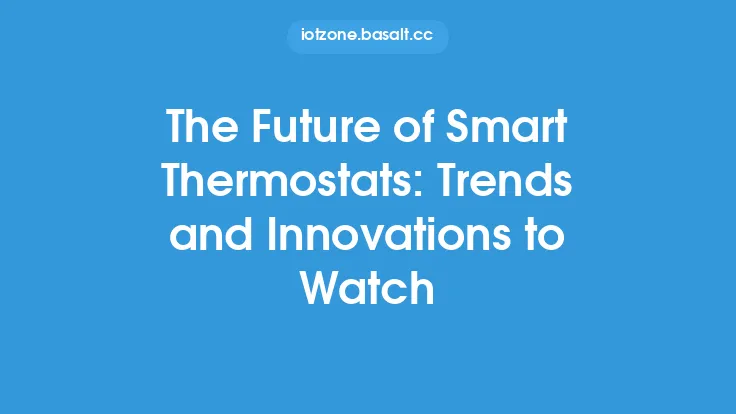The advent of the Internet of Things (IoT) has revolutionized the way we live, interact, and experience our daily lives. By integrating various devices, systems, and technologies, IoT has enabled the creation of smart homes and cities that are more efficient, convenient, and connected. This phenomenon has far-reaching implications on daily life, transforming the way we manage our living spaces, commute, work, and engage with our surroundings.
Introduction to Smart Homes
A smart home is a dwelling that incorporates various IoT devices and systems to provide a comfortable, secure, and energy-efficient living environment. These devices can include thermostats, lighting systems, security cameras, door locks, and home appliances, all of which can be controlled and monitored remotely through a smartphone or voice assistant. Smart homes can learn the occupants' preferences and adjust settings accordingly, optimizing energy consumption and enhancing overall living experience. For instance, a smart thermostat can adjust the temperature based on the occupants' schedule, preferences, and even the weather forecast.
Smart City Infrastructure
Smart cities, on the other hand, are urban areas that leverage IoT technologies to manage and optimize various aspects of city operations, such as transportation, energy, water, and waste management. By deploying sensors, cameras, and other IoT devices, cities can collect and analyze data to improve traffic flow, reduce congestion, and enhance public services. Smart city infrastructure can also include intelligent street lighting, smart parking systems, and advanced public transportation systems, all of which can contribute to a more sustainable, efficient, and livable urban environment.
The Role of IoT Devices and Sensors
IoT devices and sensors play a crucial role in enabling smart homes and cities. These devices can collect and transmit data on various parameters, such as temperature, humidity, motion, and pressure, allowing for real-time monitoring and control. Sensors can be embedded in various objects, such as buildings, roads, and vehicles, to provide insights into their condition, performance, and usage patterns. IoT devices can also be used to detect anomalies, predict maintenance needs, and optimize resource allocation, leading to improved efficiency, reduced costs, and enhanced overall quality of life.
Communication Protocols and Standards
The seamless communication between IoT devices and systems is facilitated by various communication protocols and standards, such as Wi-Fi, Bluetooth, Zigbee, and LoRaWAN. These protocols enable devices to transmit and receive data, often using low-power wide-area networks (LPWANs) that are designed for IoT applications. Standardization efforts, such as those led by the Internet Engineering Task Force (IETF) and the Open Connectivity Foundation (OCF), aim to ensure interoperability between devices and systems, promoting a more cohesive and connected IoT ecosystem.
Data Analytics and Artificial Intelligence
The vast amounts of data generated by IoT devices and sensors require advanced analytics and artificial intelligence (AI) techniques to extract insights and meaningful patterns. Machine learning algorithms can be applied to IoT data to predict energy consumption, detect anomalies, and optimize system performance. AI-powered chatbots and virtual assistants can also be used to interact with occupants, providing personalized recommendations and support. By leveraging data analytics and AI, smart homes and cities can become more responsive, efficient, and adaptive to the needs of their inhabitants.
Security and Privacy Concerns
As IoT devices and systems become increasingly pervasive, security and privacy concerns arise. The interconnected nature of IoT devices creates potential vulnerabilities, such as data breaches, unauthorized access, and malware attacks. To mitigate these risks, manufacturers and developers must prioritize security and implement robust measures, such as encryption, secure authentication, and regular software updates. Occupants and citizens must also be aware of the potential risks and take steps to protect their personal data and privacy, such as using strong passwords and being cautious when sharing sensitive information.
The Future of Smart Homes and Cities
The future of smart homes and cities holds tremendous promise, with ongoing advancements in IoT technologies, data analytics, and AI. As these technologies continue to evolve, we can expect to see even more innovative applications, such as autonomous vehicles, smart grids, and intelligent buildings. The integration of IoT with other emerging technologies, such as augmented reality, blockchain, and 5G networks, will further enhance the capabilities and potential of smart homes and cities. Ultimately, the IoT effect on daily life will be profound, transforming the way we live, work, and interact with our surroundings, and creating a more sustainable, efficient, and connected world for generations to come.
